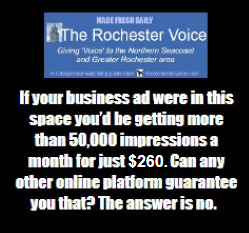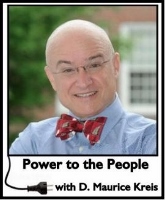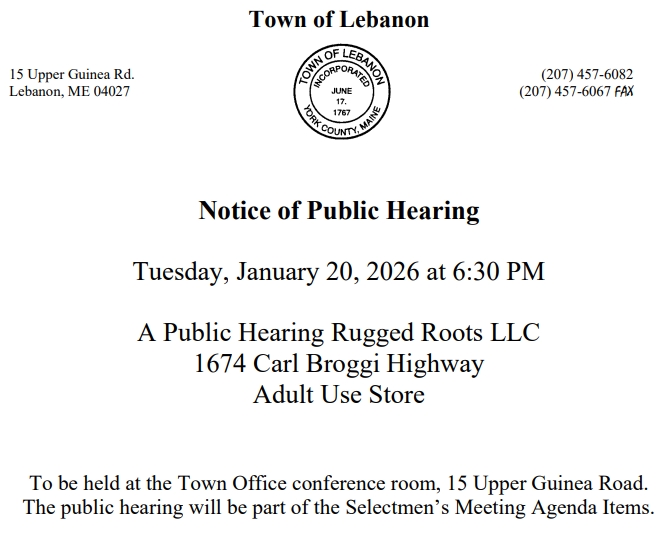Recently the Business and Industry Association of New Hampshire was kind enough to invite me to address its annual energy symposium to talk about our state's electricity rates. The BIA framed its query to me as it always does when this subject comes up: Why are electricity rates so high?
It is a loaded question.
In 1917, a Connecticut insurance executive named Wallace Stevens published what became a famous poem, "Thirteen Ways of Looking at a Blackbird." The point was that even something as everyday as a blackbird could be usefully described in numerous ways, yielding truths far removed from the realities of feathers and flight.
What I told the BIA can be distilled down to 13 observations that I share here in the spirit of Wallace Stevens. As a high official of the Hartford Accident and Indemnity Company, Stevens would (I hope) appreciate my resolve to confine my observations to the true and verifiable.
- Electricity rates in New Hampshire are high because costs are intrinsically high in this part of the country. A cold climate plus distance from cheap fuel means we are never going to beat Louisiana when it comes to inexpensive electricity.
- Our electric rates are not out of line with those of the region - i.e., the states with which we compete most directly. According to the Energy Information Administration, in 2018 the average retail price of electricity nationwide was 10.53 cents per kilowatt-hour but the average for New England was 17.63 cents. Our average was 17.01 cents, ahead of Connecticut, Massachusetts, and Rhode Island but behind Maine and Vermont
- Are you looking for items that are making our electric rates higher than they should be? Start with transmission - what everyone in New England pays for moving electricity at high voltage around the region. We've essentially eliminated transmission congestion in the six New England states but as a result our transmission rates are the highest in the country and state regulators cannot order otherwise.
- An even more dismal reality is the regional "capacity" market - mandatory purchases overseen by the nonprofit grid operator ISO New England. "Capacity" is a promise to be available to produce energy when called on, and the industry titans say this is essential for reliability. But Texas has no capacity market and we should consider abolishing ours.
- If we can't get rid of the capacity market at least we should fix it. Recently Ron Gramlich and Michael Goggin of the consulting firm Grid Strategies issued a report entitled "Too Much of a Good Thing: The Need for Capacity Market Replacement or Reform." My favorite nugget from this excellent report has to do with "value of lost load" - literally what it's worth to us to avoid blackouts. "The Value of Lost Load implied by the reserve requirement in capacity markets has been calculated to be $200,000 per megawatt-hour for ISO New England," according to Gramlich and Goggin, which is "well over ten times conventional estimates of value of lost load.
- Embedded in the energy charge on everyone's electric bills are massive, federally approved subsidies to legacy generators in the name of "fuel security." The latest iteration prompted Rich Glick, a member of the Federal Energy Regulatory Commission (FERC), to muse that "burning money might contribute as much" to fuel security as the scheme in question, which could cost New Hampshire ratepayers up to $30 million. Our office and the Public Utilities Commission (PUC) are taking the case to the U.S. Court of Appeals for the District of Columbia Circuit.
- Customers don't pay rates, they pay bills. Customers can lower their bills by getting more work out of each unit of electricity consumed - i.e., energy efficiency. New Hampshire is dead last in the northeast (unless you count Delaware) for energy efficiency according to the American Council for an Energy Efficient Economy. Even though it's not part of their franchises, we task the utilities with promoting and delivering energy efficiency, using ratepayer money to do it. These companies should be more outspoken proponents of energy efficiency initiatives.
- Eversource customers pay a stranded cost charge; for homeowners it's 1.764 cents per kilowatt-hour, a not-insignificant slice of the bill. Most of that charge pays for the $400 million-plus mercury scrubber at Merrimack Station that should never have been built. Conventional wisdom blames the General Court and Governor Lynch for the statute endorsing the scrubber. But it's absurd to assume this bill ordered Eversource to build the project regardless of its cost. What if the price tag had been $7 billion?
- Kudos to the New England Ratepayers Association for leading the effort to get the FERC to declare ratepayer-funded subsidies to five wood-burning power plants and one trash burner a violation of the Federal Power Act. But a bill to restore those subsidies will be back in the upcoming legislative session. And Eversource customers are still paying a similar subsidy to the biomass plant in Berlin. The forest products industry needs help, but from taxpayers not ratepayers.
- Utilities are supposed to keep rates in check by planning their capital projects on a least-cost basis. But the PUC has not been enforcing the least-cost integrated resource planning statute; it simply declines to scrutinize the actual spending choices the utilities make. Worse, utility-supported efforts to reform this PUC process in the name of "grid modernization" are likely to mean free money, via ratepayer bills, for utilities.
- Only the New Hampshire Electric Cooperative and Unitil have fully embraced smart meters. Eversource, in particular, has resisted. Smart meters undermine the traditional utility business model - and keep customer bills in check -- by enabling time-varying rates and innovative services provided by companies the utilities consider their competition.
- The more pro-ratepayer voices there are in PUC proceedings the lower rates will be. The AARP just requested intervenor status in the pending Eversource rate case - good for them. Representatives of commercial and industrial customers should be in the room too.
- Customers in California and Maine seeking the demise of their investor-owned utilities have a point. Investors demand a lavish return on their investment from ratepayers. Why do we need investors? Because in theory the profit motive drives innovation and progress. Is that happening in New Hampshire? In many respects, the most evolved utility in New Hampshire is the Electric Co-op, where the owners and the ratepayers are the same folks.
In his 1917 poem Wallace Stevens wrote that "when the blackbird flew out of sight, it marked the edge of one of many circles." (In fact, that's the entirety of Stevens' ninth way of looking at a blackbird.) It is reminiscent of a similarly poetic phrase - "zone of reasonableness" - coincidentally coined that same year by Justice Louis Brandeis of the U.S. Supreme Court and widely adopted since then.
Brandeis was talking about how far rates could soar before violating the statutory "just and reasonable" standard. That's one bird we cannot afford to see flying out of sight.
Power to the People is a column by D. Maurice Kreis, New Hampshire's Consumer Advocate. Kreis and his staff of four represent the interests of residential utility customers before the NH Public Utilities Commission and elsewhere. It is co-published by Manchester Ink Link and InDepthNH.org and distributed as a public service to news outlets across the state.














